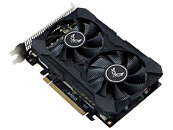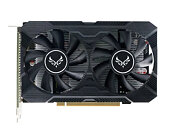
NVIDIA N1x is the Company's Arm Notebook Superchip
We've known since 2023 that NVIDIA is working on an Arm-based notebook SoC, and now we're seeing the first signs of the chip. A processor labelled "NVIDIA N1x" surfaced on the Geekbench 6.2.2 online database, where it scored 3096 points in the single-threaded benchmark, and 18837 points in the multithreaded benchmark. This chip is shown powering an HP-branded prototype notebook, labelled "HP 8EA3," which is running Geekbench on Ubuntu 24.04.1 LTS. The processor is identified by Geekbench as having 20 logical processors, which means it has a core-count of 20. This could be a multi-tiered big.LITTLE configuration making up those 20 cores. The clock speed being reported is 2.81 GHz. The company could implement reference Arm cores, such as the Cortex-X925 P-cores, and Cortex A725 E-cores. The HP testbed used for the Geekbench run has a whopping 128 GB of RAM.
NVIDIA has been eyeing a specific slice of the PC pie that's addressed by Qualcomm with its Snapdragon Elite line of processors for Windows-on-Arm notebooks, complete with an NPU accelerating Microsoft Copilot+ on device. The N1x could also compete with Apple's M3 or M4 chips powering its iPad Pro and MacBooks. For now, Microsoft has confined Arm-based Copilot+ to Snapdragon processors, but NVIDIA will probably work with Microsoft to open up this platform to its chips. NVIDIA has been an Arm SoC maker for decades, its first rodeo with Arm-based client-segment SoCs has been under the Tegra brand, powering Android smartphones and tablets. The company has been making Arm CPUs all this while, but for the enterprise segment (eg: Grace CPU).
NVIDIA has been eyeing a specific slice of the PC pie that's addressed by Qualcomm with its Snapdragon Elite line of processors for Windows-on-Arm notebooks, complete with an NPU accelerating Microsoft Copilot+ on device. The N1x could also compete with Apple's M3 or M4 chips powering its iPad Pro and MacBooks. For now, Microsoft has confined Arm-based Copilot+ to Snapdragon processors, but NVIDIA will probably work with Microsoft to open up this platform to its chips. NVIDIA has been an Arm SoC maker for decades, its first rodeo with Arm-based client-segment SoCs has been under the Tegra brand, powering Android smartphones and tablets. The company has been making Arm CPUs all this while, but for the enterprise segment (eg: Grace CPU).



























































